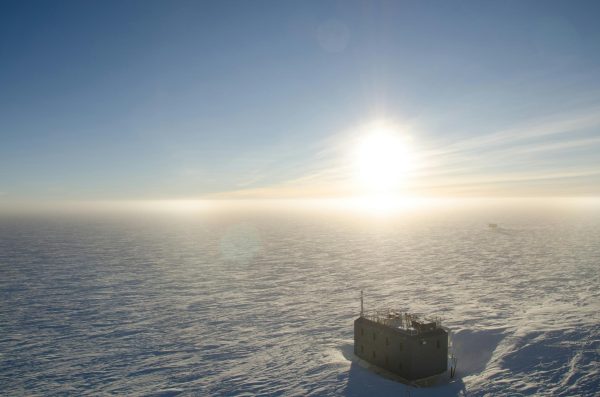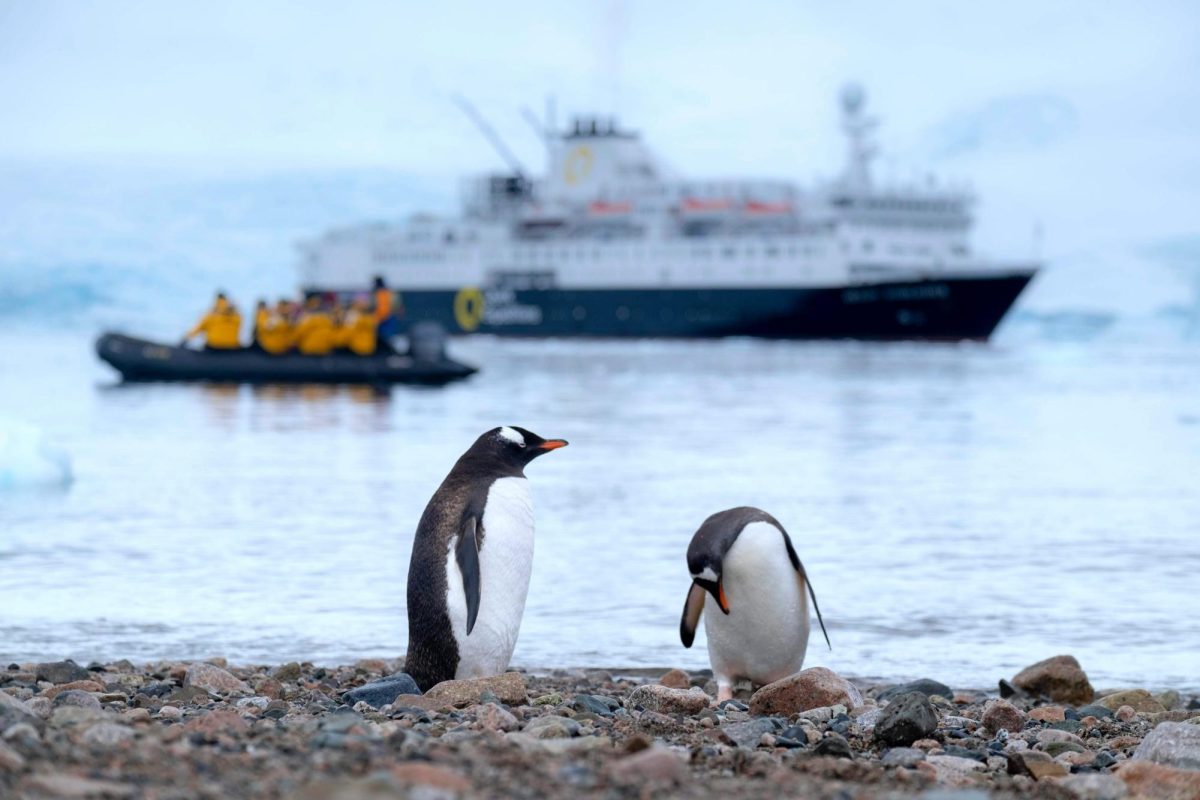Every drop of snow on the icy regions of the North and South Pole is precious as the landscapes are exponentially deteriorating. The once booming landscape of Antarctica and the Arctic has a melancholy ambiance as the wildlife no longer flourishes.
The North and South Pole are the two coldest regions in the world. Connecting the North and South Pole by an imaginary line between them is the Earth’s axis, which is at a proportionate slant. The North Pole refers to the region of the Arctic at the top of the Earth, while the South Pole is a region in Antarctica at the bottom of the Earth.
The Ancient Greek philosopher, Aristotle, wrote in his book Meteorology, “There are two inhabitable sections of the earth: one near our upper, or northern pole, the other near the other or southern pole; and their shape is like that of a tambourine…These sections alone are habitable. Beyond the tropics no one can live: for there the shade would not fall to the north, whereas the earth is known to be uninhabitable before the sun is in the zenith or the shade is thrown to the south: and the regions below the Bear are uninhabitable because of the cold.”
The iconic ice sheets in the polar region of Antarctica were formed thousands of years ago when intense snowfall built up and created glaciers. Although Antarctica is a desert, the majority of the continent is made up of a formation of sporadic glaciers unified as one whole continent. To maintain a balance within the glaciers, the amount of snow has to correlate with the amount of melting ice. That is why cold temperatures in Antarctica are crucial to maintaining the environment. The wildlife has also adapted to the environment and will decline if temperatures begin to rise.
Fifty-six countries signed The Antarctic Treaty to preserve Antarctica, to ensure it is only used for peaceful purposes, and research findings are always made public. The main purpose of the treaty is to prevent Antarctica from becoming a military ground. Research in Antarctica is very much encouraged.
Antarctica and the Arctic have become a hub for scientific exploration. Many scientists operate research stations across the regions to conduct studies on climate change, glaciology, marine biology, and astronomy. A lot of Antarctica and the Arctic is a mystery because there are certain areas that scientists have not yet researched and because of hazardous weather conditions. Research in these places is significant in understanding global climate patterns.
Megan Cimino, a researcher at UC Santa Barbara, has recently taken a trip to Antarctica where she researched the effects of climate change on wildlife. Her research is through the Palmer Station Long term Ecological Research Program, one of the few United States research facilities in Antarctica. Cimino said, “Palmer Station is located midway down the west Antarctic Peninsula – one of the most rapidly warming regions on Earth.” She says climate change has affected Antarctica so much that, “The glacier behind Palmer Station has retreated by over 4 football fields in the last 60 years. This is very visually noticeable. And this is not just occurring at Palmer Station but along most of the Antarctic Peninsula.”

While the Treaty of Antarctica permits tourists to enter the grounds, it is not necessarily advised. Tourists have been interested in visiting Antarctica since around the 1970s, after the first trip in 1966. Cimino mentions that, “Sadly, Antarctica isn’t as pristine as you would expect it to be. There are microplastics found in the water which are ingested by animals across the food web and there is a surprising amount of marine debris that washes up along the shore.” This reveals that allowing tourists to visit Antarctica may not be a good practice.
Devastation in Antarctica has grown extreme as the effects of climate change have negatively impacted the animal population. Antarctica is the native home of many penguins and is the only location where Emperor penguins are found. Penguins thrive on the thin, icy layers of land and are often found swimming in the water for their food. Penguins also spend the majority of their life on sea ice for breeding their chicks. Due to changes in water temperature and other environmental factors, the sea ice that penguins use to lay eggs is vanishing. As of February 2024, sea ice in Antarctica reached an all-time low. And due to the decline in sea ice, baby chicks are rapidly dying. Cimino said that the penguin population has decreased by about 92%.
Proportional to Antarctica, found at the top of the world is the area of the Arctic, which shares similar atmospheric conditions to Antarctica. Because of climate change, the Arctic is experiencing similar environmental changes as Antarctica, which is negatively affecting many native species. The two climates are vastly similar, but the South Pole is notably colder, which explains why they differ in the wide variety of species that inhabit the regions.

Polar bears are just one example of wildlife that are found in the North Pole, but not the South. Scientists estimate that polar bears evolved from brown bears during the separation of Pangea around 500,000 years ago. Polar bears are primarily found in the Arctic, but are also situated in certain glacial places like Canada, Russia, and Alaska. However, polar bears never migrated south, which is why there are no polar bears in Antarctica. Although the climate in Antarctica would be suitable for polar bears, the journey to get there would be nearly impossible as the North and South Pole are very far and not easily connected.

Polar bears, like penguins, are negatively affected by the melting sea ice. Polar bears have less land to inhabit, so they have had to change parts of their diet. Polar bears are hunting more and eating less, so they end up losing a lot of their much-needed body weight. Polar bears’ diets consist mostly of fat, which they get from seals, however, because of the changes, polar bears are failing to get their required nutrients. Part of the issue is polar bears have to travel even farther to find food, so they burn too many calories. Polar bears need to keep their weight to tolerate the cold climate and store energy when they cannot get food.
The North and South Pole stand as a symbol of the raw beauty and resilience of the natural world. The icy expanses of Antarctica and the Arctic serves as a habitat for scientific inquiry and encourages the spirit of exploration. As we continue to unravel the mysteries of these frozen places, it is important that we protect the fragile ecosystems and confront the challenges of climate change. Although these places may be remote, they are incredibly significant. We must preserve the fragile beauty and biodiversity of these remarkable places for future generations.
The North and South Pole stand as a symbol of the raw beauty and resilience of the natural world.

